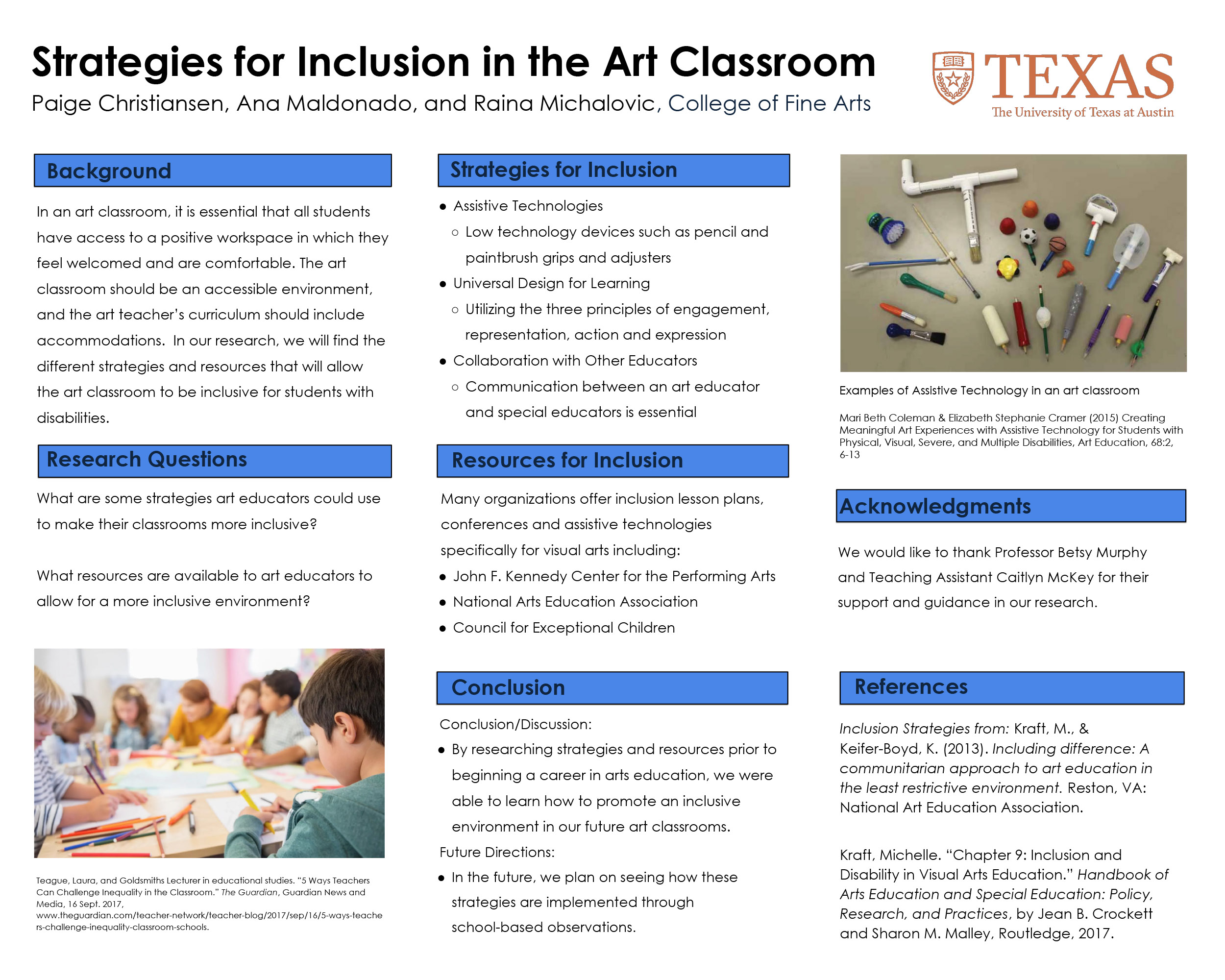Paige Christiansen, Ana Maldonado, and Raina Michalovic
In an art classroom, it is essential that all students have access to a positive workspace in which they feel welcomed and are comfortable. The art classroom should be an accessible environment, and the art teacher’s curriculum should include accommodations. In our research, we will find the different strategies and resources that will allow the art classroom to be inclusive for students with disabilities.

Comments
Thank you for sharing your research. Have you come across any good examples of spaces that have implemented similar inclusion strategies? I recollect one of my professors advice (Design for Human Behavior) : ‘if you design keeping the young kids and elderly people, you automatically increase the probability of the design being more inclusive and accessible to everyone.’ —Hannah S Saji
Great poster. In your own experiences as students, have you encountered many instructors making good use of these resources and strategies for inclusion? —Rob Reichle
This is such a great topic! Id’ love to know some more specifics on your research. What is the scope/definition of inclusion in your research/the research you mention here? It seems like your recommendations cover quite a few different kinds of barriers that could make the classroom inaccessible to children. Do you have some examples for specific ways that teachers have made classrooms more accessible? Thanks! —Anna Hornsby
This is a great topic! Thank you for sharing your research. It seems like an important set of recommendations for anyone in art education. —Jeanette Herman

